photography
As a student, I was able to see retrospective exhibitions of Bill Brandt, Paul Strand and Henrier Cartier Bresson. I was a regular visitor to The Photographer's Gallery and became interested in the lens-based work of Rodchenko there. I also caught a wide-ranging Magnum retrospective, first in Essen then at the Barbican. My first poetry book was a collaboration with the photographer Sam Maynard. Some of our page by page poems and photos were published in London Magazine and in Kunapipi – an international journal of post colonial studies, published in Denmark. This led directly to Malin, Hebrides, Minches with Dangaroo Press in 1983. It was launched at the Commonwealth Institute and brought me into a world-wide community of writers. Through a mutual friend, Seamus Heaney gave generous help in the editing of poems which became part of this book.The experience of working with Sam, sometimes as assistant and also attending his evening class in photography, I grew confident in taking my own images on a manual Pentax SLR. It was then I found my main interest was colour. It probably still is.
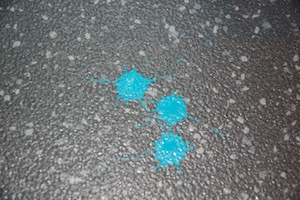 kind of...
kind of... no use crying over spilt paint
no use crying over spilt paint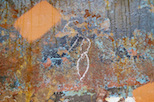
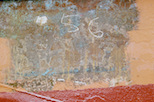
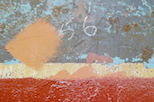
under repair (Goat Island slipway, Stornoway)
I've now entered the digital landscape but hanker back to awaiting the return of positive film, Kodachrome 64 or even, on occasion 25, cased in cardboard mounts. A selection of these led to the photo illustrations forProvidence II(The Windfall Press) and an exhibition originated by an Lanntair, still in the town-hall space then. I was very pleased when my poem and Cibachrome pairings shared the space with Caroline Tisdall's b/w work on Witch's Point, Loch Maree. The work led to invitations to publish work in The Herald and photo-poem combinations appeared in The Scotsman and Scotland on Sunday. Looking back, maybe the technique doesn't really mater so much to these. Friends have been helping me scan old slides. Now I sometimes forget which begun on film
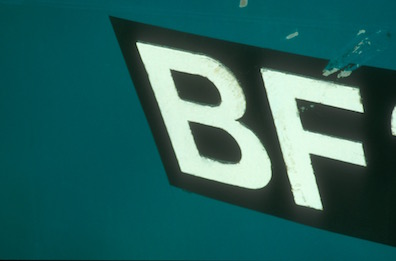 in commission
in commission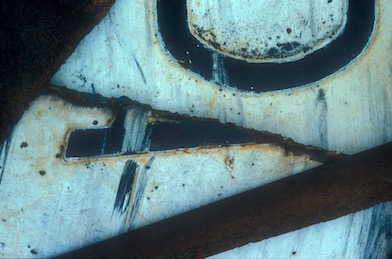 decommissioned
decommissionedSometimes I've considered translating old slides to black and white, for practical reasons:
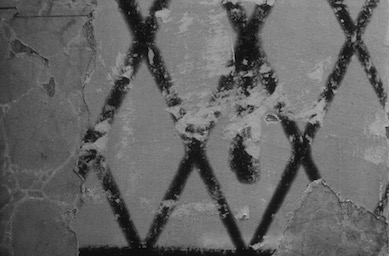 Tuscan Dingwall
Tuscan DingwallThese were part of a series called Quiet Annunciations, to accompany poems as a landward relation of Providence II. Elements have been published on line but not in book form, to date (2017).
video
As with still photography, I first became fascinated with moving film, as a student in Aberdeen.
In 2017, I found it very moving to be invited back to the University as part of the Lewis to Lahore storytelling and music collaboration. I found time to wander, snapping with my phone:
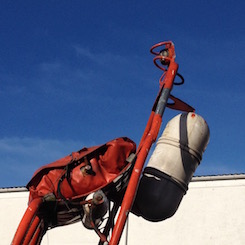
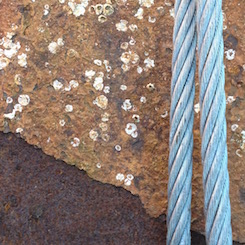
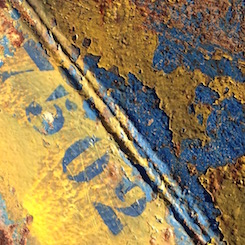
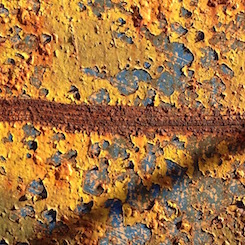
I had my first experience of working with video at Comhla, a pilot project for a series of Triangle Trust artists' workshops, in Scotland. Andy Mackinnon helped me with technical matters. This led to a series of poems and stories as video, often with music, in collaboration. The poem-films were developed as first artist in residence at StAnza poetry festival, 2014. In 2017 two films were selected for inclusion in Running Time - Scottish Artists' Films from 1960 on. A review in The Guardian and The Observer made the comparison with the work of Margaret Tait. See more in
Plays and Films section. Here's a couple of stills:
So what am I, a photographer or writer or poet or wannabee film-maker or what?
I've been asked that more than once. Maybe I tried to answer this in a thoughtful moment, writing Waypoints:
'I am fascinated by the way that an object designed for a function can assume a beautiful shape, as if by accident. How language striving to be a precise, functional description, can also be beautiful. How the texture of an object can gain interest from the marks of use or by weathering. How words are shifted and bent in useage.'
Once, navigating a newly launched Swedish built yacht, the owner's wife watched me doing deckwork and said that the way I tied knots was like dancing. That's probably my coastguard background and help from mentors over the years. I love to watch dance but there seems to me to be beauty in everyday movements: a carpenter nudging a sharp plane along; a knitter; a netmender. Stories often accompany these actions, affected by the rhythms of work.
Then again, there is the factor of accident. I found myself painting with glue, one day:

And there are other accidents, as when damp adds its layer to a map: more strange new language.
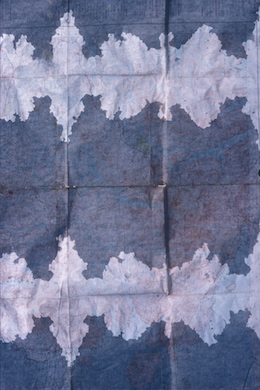 our mapping is falling apart
our mapping is falling apart like our dictionaries
as soon as proofed